With its V6 & V8 engines, the 2020 Dodge Challenger defines the term ‘American muscle.’ The iconic coupe is offered in seven trim levels, from the base SXT to the range-topping SRT Hellcat.
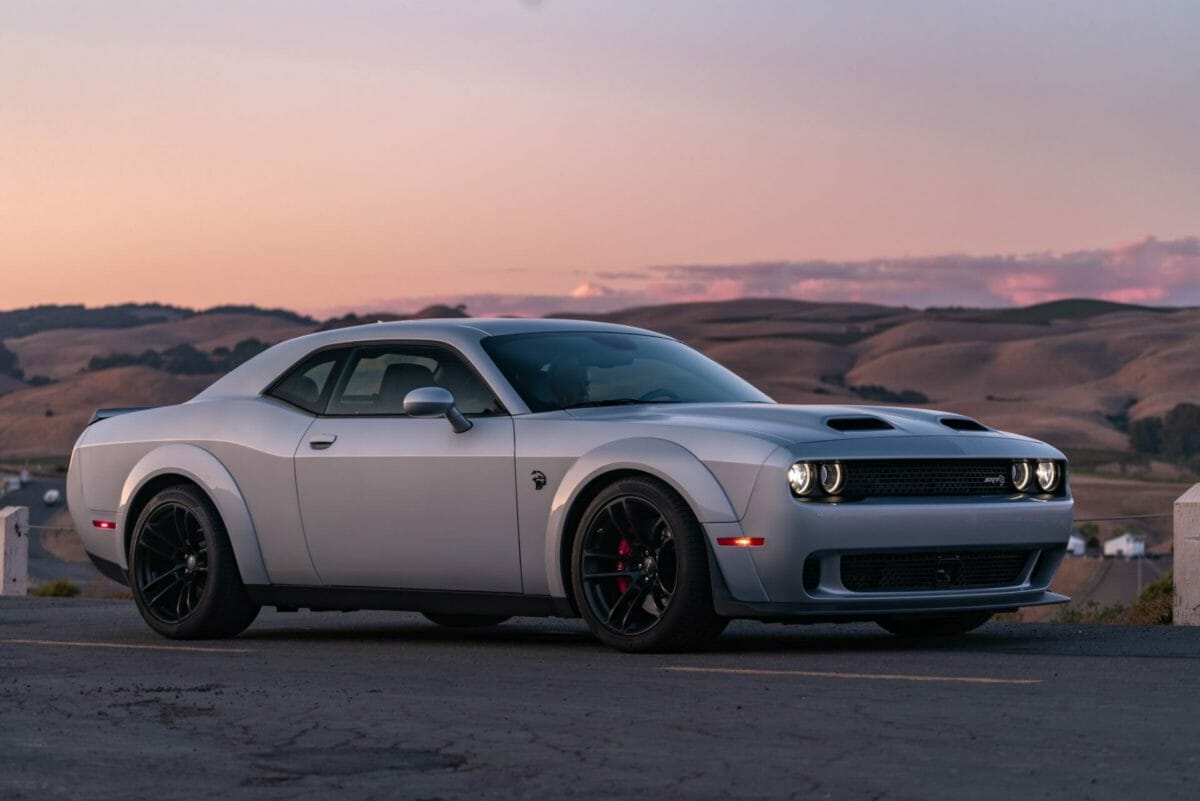
The year 2020 was the 50th anniversary of the iconic Dodge Challenger. While many of its competitors looked to electric or hydrogen drivetrains, Dodge doubled down on classic muscle with its 2020 Challenger lineup. Mopar’s flagship coupe is available with a V6 engine, one of two naturally-aspirated V8s, or the Hellcat supercharged V8—each power plant corresponding to one or more of seven total trim levels.
Dodge launched the Challenger in 1970. With this midsize, two-door muscle car, Dodge finally entered the pony car market that the 1964 Mustang had pioneered, and the 1966 Camaro had dominated.
The Challenger was longer than its competitors; Chrysler Corporation engineered its new E-body chassis for its signature big-block V8s. Many car buyers preferred the long, sleek lines of the aggressive Dodge. Though short-lived, the first-generation Challenger has become emblematic of American muscle, and a sought-after collector’s car.
When Ford and Chevrolet released nostalgic, modern takes on the Mustang and the Camaro, Dodge again bided its time. The engineers at Mopar considered every detail of the original Challenger, finally unveiling their redesigned muscle car in 2008. Car and Driver celebrated the 2008 Challenger as “robustly retro.”
In 2015, Dodge again made history with Detroit’s first factory supercharged muscle car: the 707 horsepower Dodge Challenger SRT Hellcat. The 2018 model year included a more powerful Hellcat variant: The Dodge Challenger SRT Demon. The Demon boasted 808 horsepower and a 1⁄4-mile time of 9.65 seconds at 140.09 mph. The Demon claimed the fastest 0-60 mph and 1⁄4-mile time of any non-electric production car.
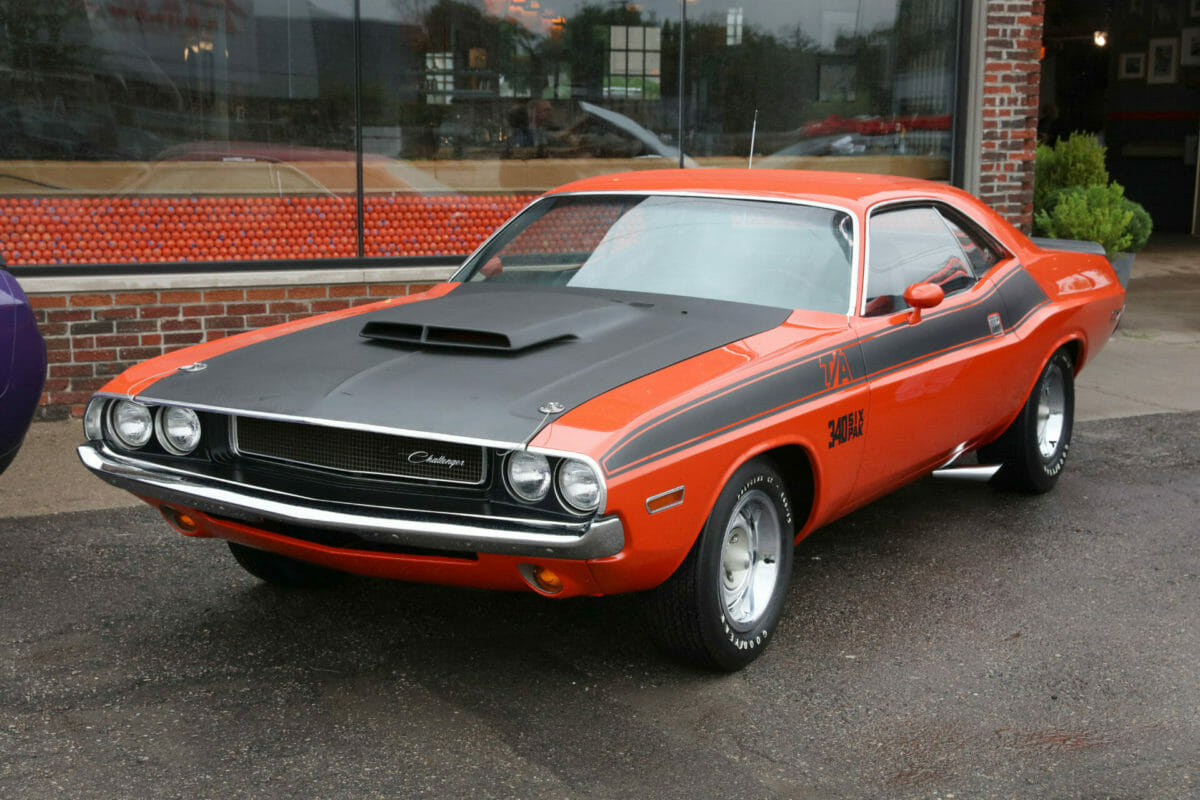
Is a GT or SXT Faster?
In 1970, the entry-level Dodge Challenger shipped with an inline-six-cylinder engine rated at just 145 hp. Fast-forward 50 years and the entry-level Challengers come equipped with Mopar’s 220 ci (3.6L) “Pentastar” V6 rated for 305 hp.
The V6 is engineered for regular gas and is only offered with an eight-speed automatic transmission, equipped with an overdrive and auto-manual mode. The rear-wheel-drive (RWD) V6 earned a 23 mpg combined city/highway fuel economy rating.
V6-powered Challengers are available with an all-wheel-drive (AWD) powertrain. AWD Challengers cost $3,000 more than their RWD counterparts and are rated at 21 mpg for combined city/highway driving.
The 2020 Challenger SXT starts at $28,095 and is available in 13 colors. The Challenger GT starts at $31,095 and is available in 14 colors.
The 50th Anniversary Edition of the 2020 Challenger is a special appearance package available for several trim levels, which includes “Gold Rush” yellow painted wheels, deluxe upholstery, carbon fiber interior trim, a special grille badge, and a serialized number plaque.
The 50th Anniversary Edition of the 2020 Challenger GT was limited to 70 units with each valued at $36,090.
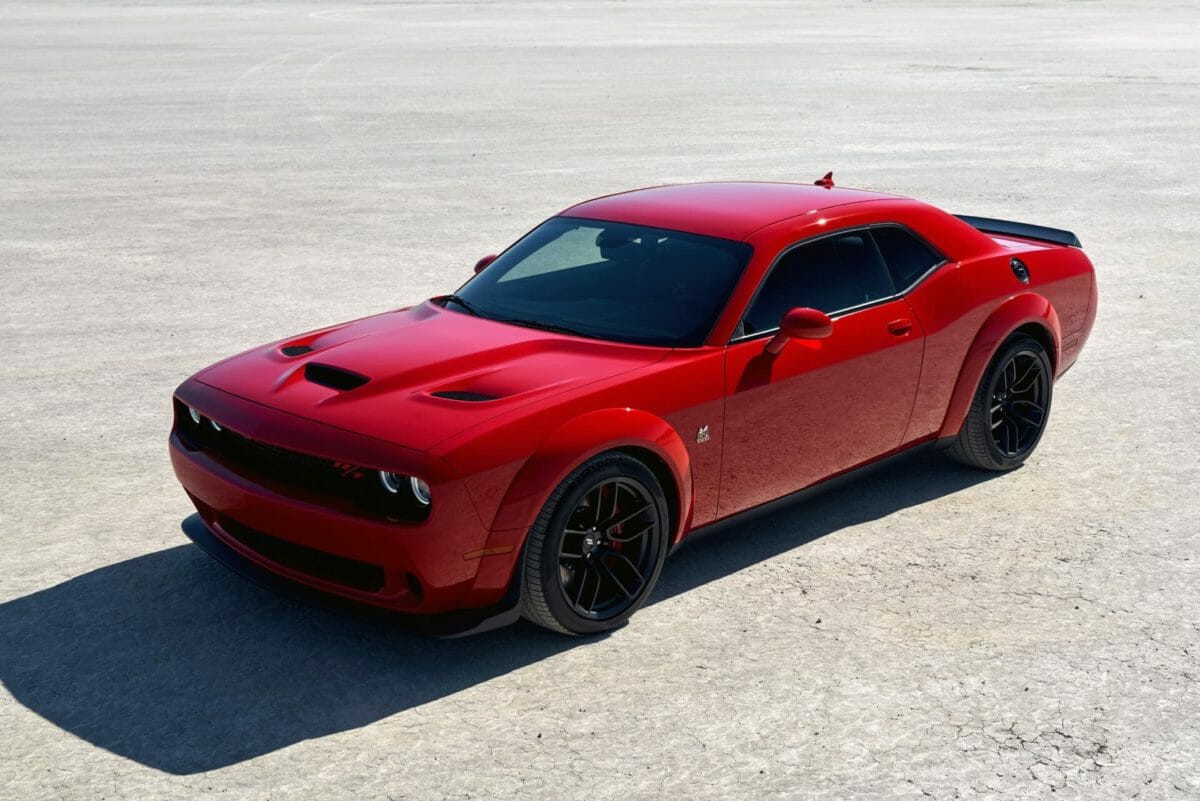
Dodge’s 5.7L V8 Drives Nostalgic Challenger R/T
R/T stands for Road/Track and it is one of Mopar’s most storied badges, appearing on the legendary big-block muscle cars of the 60s and 70s. Every 2020 Dodge Challenger R/T is powered by a naturally-aspirated V8 engine. All V8-equipped Challengers are RWD.
Mopar’s 345 ci (5.7L) V8 is a classic Hemi upgraded with an aluminum block and fuel injection. It is designed for premium gas and rated for 375 hp. The standard R/T transmission is a six-speed manual with an overdrive gear; an eight-speed automatic is optional.
The 2020 Dodge Challenger R/T is available in 14 colors and starts at $34,995. Each of the 70 Challenger R/T 50th Anniversary cars starts at $39,990.
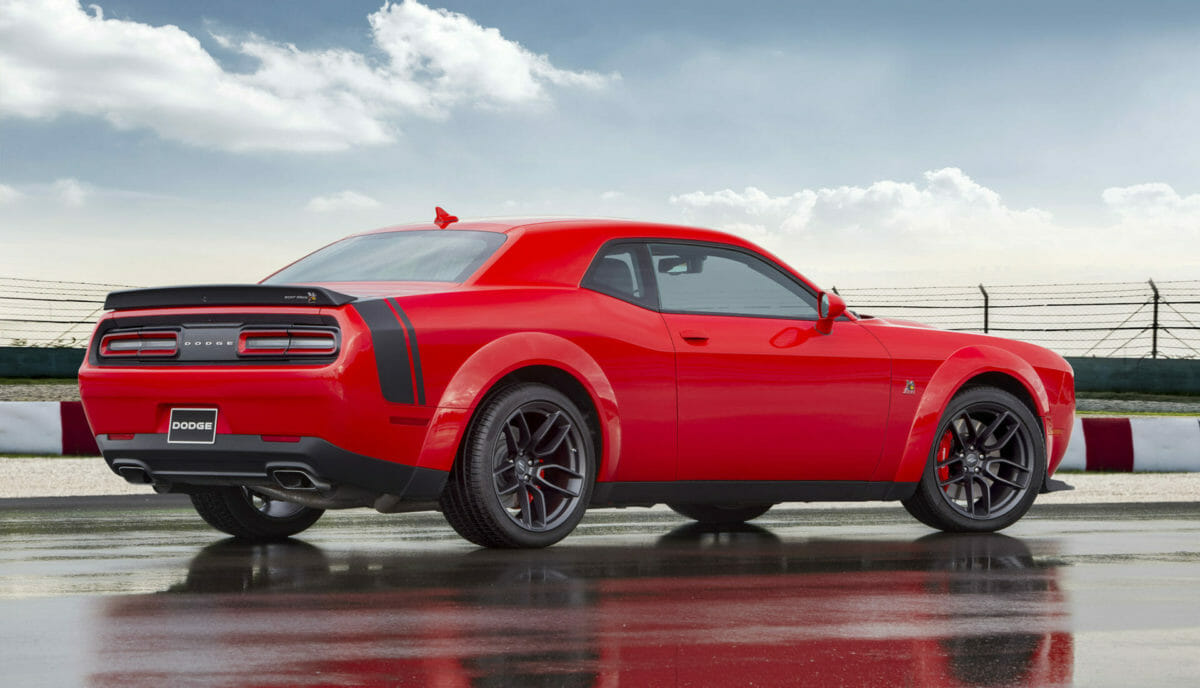
Challenger R/T Scat Pack Packs a 6.4L V8
The Scat Pack badge has signified engine upgrades across many Chrysler Corporation muscle cars. Today, the Scat Pack is an engine option available on the 2020 Challenger R/T.
The 2020 Challenger R/T Scat Pack enjoys Dodge’s largest displacement engine: the 392 ci (6.4L) Hemi V8. Dodge’s Hemi V8s date back to the 1950s when they earned their nickname because of their innovate, hemispherical combustion chambers. This modern, 6.4L V8 is the result of decades of Mopar engineering: It is rated for an incredible 485 hp while achieving an unprecedented 21 mpg of combined city/highway fuel mileage.
The 2020 Challenger R/T Scat Pack starts at $39,995. The R/T Scat Pack is also available as a widebody (with wider tires and a body kit), starting at $45,995. The limited-edition Challenger R/T Scat Pack 50th Anniversary begins at $45,490, while the R/T Scat Pack Widebody 50th Anniversary fetches $51,490.
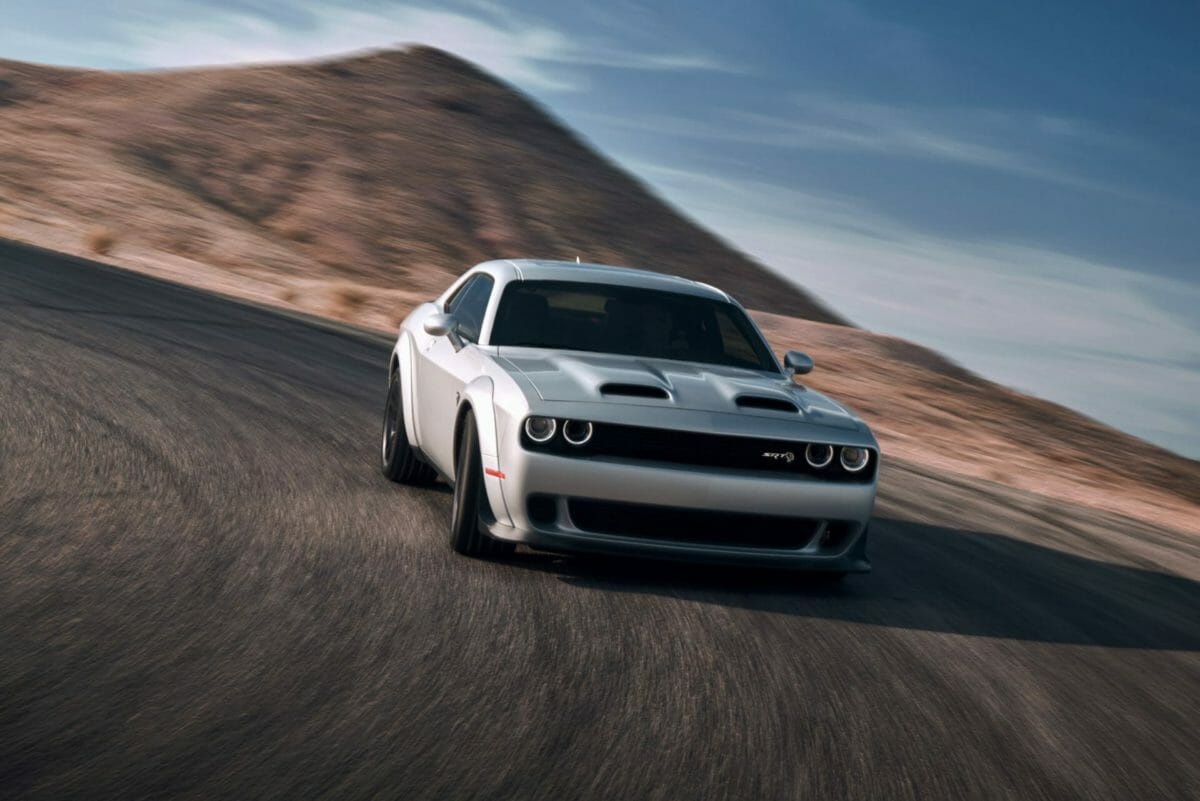
Do All Three Levels of the SRT Have a V8?
When Dodge’s legendary SRT division began to experiment with a factory supercharged Hemi, the department’s internal name for the engine was the “Hellcat.”
When the 707 hp monster neared production, Dodge marketing agreed that Hellcat was a fitting moniker and the name stuck. All three SRT-tuned models of the 2020 Challenger feature a supercharged Hellcat engine.
The 2020 Dodge Challenger SRT Hellcat is powered by the legendary 376 ci (6.2L) factory supercharged V8. After its recent retune, the track-ready engine brags 717 hp. Like the R/Ts, all Challenger SRTs are available with a six-speed manual or eight-speed automatic transmission. The Hellcat is rated for 16 mpg of combined city/highway mileage. It is also available as a widebody: the 2020 Challenger SRT Hellcat starts at $60,695 while its widebody brother is worth $66,695.
The SRT team was not satisfied with the world’s most powerful muscle car: for the Challenger SRT Hellcat Redeye edition, they retuned the supercharged V8 for 797 hp. The upmarket Hellcat can sprint from 0-60 in 3.5 seconds and goes for $72,295 while the widebody version commands $78,695. Dodge also built 50th Anniversary editions of the SRT Hellcat and Hellcat Redeye, both runs limited to 70 vehicles, all of which have already been sold to collectors.
Finally, the SRT division cooked up a track-ready Demon replacement for 2020: the 807 hp Dodge Challenger Super Stock. With its redline increased to 6400 rpm, the Super Stock produces 707 lb.-ft. of torque. The car’s lightweight rims, track-tuned suspension, and shorter final-drive ratio are all engineered to dominate the 1⁄4-mile. For 2020, Dodge built approximately 200 Challenger SRT Super Stocks—all widebodies—and they are listed at $81,695.
New for 2020, every Challenger SRT comes standard with redesigned 20-inch wheels. Challenger SRT Widebody cars are available with special “Warpspeed” wheels with a low gloss Granite finish. New colors for 2020 Challengers include Frostbite, Hellraisin, and Sinamon Stick.
Photos: Dodge